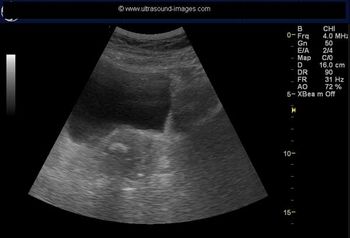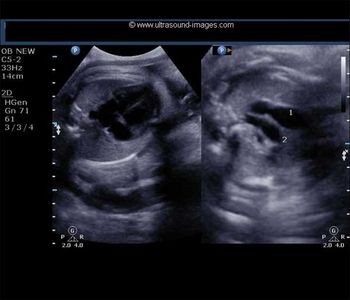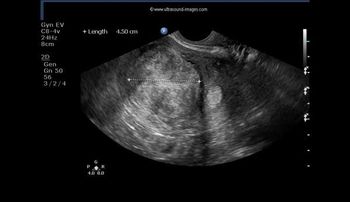
All News


Doing nothing is no longer an option, say the authors. Cervical length assessment should be provided to a larger population of women to identify and treat those with cervical shortening.

Is there evidence that patient care has improved since the work limits took effect?

Having a hysterectomy with or without ovary removal in mid-life does not increase a woman's risk of cardiovascular disease compared to women who reach natural menopause, contrary to many previously reported studies.

The U.S. Preventive Services Task Force’s (USPSTF) 2009 recommendation has done little to change women’s minds about the need for routine screening in their 40s.

Researchers found that nearly one-third of women experienced a recurrence of POP, either on examination or by reported symptoms, within 5 years of surgery.

What you need to know about recent research on genetic causes and prevention. An editorial by Editor in Chief Charles J. Lockwood, MD.

Excessive traction blamed for brachial plexus injury; bowel injury after laparoscopy; prolonged second stage blamed for CP; failure to perform timely cesarean blamed for child’s developmental delay; uterus perforated during hysteroscopy; severe IUGR not detected in high-risk pregnancy

Three major Ohio universities and 4 hospitals have joined with the March of Dimes Foundation to establish a new collaborative research program aimed exclusively at finding the unknown causes of premature birth.

The guidance you need for coding cervical screening from the SMFM Coding Committee.

A commentary on ACOG Practice Bulletin Number 131: Screening for Cervical Cancer, November 2012

Many women who undergo abdominal sacrocolpopexy for pelvic organ prolapse (POP) experience a recurrence of POP or urinary incontinence within 5 years of surgery.

The British Menopause Society (BMS) on May 23 released updated recommendations on hormone replacement therapy (HRT), claiming that they are finally providing clarity to this murky issue. The new guidelines appear in the society’s flagship journal, Menopause International. Developed by a panel of experts, the guidelines discuss how women can optimize their menopause transition, focusing in particular on lifestyle and diet and the pros and cons of complementary therapies.

Despite several studies indicating that women with copper IUDs suffer from worse dysmenorrhea than those who don’t have the device, a recent study published on April 11, 2013, in Human Reproduction indicates that this may not be entirely accurate.

Women with a history of preeclampsia or other hypertensive pregnancy diseases are more likely to experience vasomotor menopausal symptoms.


A new analysis from the SWAN study shows that anxiety before menopause does not correlate with anxiety during the menopausal transition. Researchers from the multisite Study of Women’s Health Across the Nation, report in Menopause that women who are calmer at premenopause actually are more susceptible to high anxiety during and after menopause than before menopause, and vice versa.

University students who use combination hormonal contraceptives to schedule a bleeding cycle do so for convenience rather than relief of symptoms, according to a new study by University of Oregon investigators. And family or friends--not health care professionals--are the source of information on how to manipulate method use for many of these women.

Results of a study of more than 116,000 women, published online May 14 in Human Reproduction reveal a 39% lower risk of endometriosis in those who were morbidly obese than in women with normal body mass index (BMI).

Metabolic syndrome is more likely to develop in postmenopausal survivors of breast cancer than in postmenopausal women who never had the disease.

Laparoendoscopic single-site surgery with hysterectomy (LESS-H) for benign disease with either a lateral or vaginal approach is a feasible procedure regardless of cesarean section history.

Research presented at the American Urological Association (AUA) annual meeting in San Diego, California, has linked the use of oral contraception (OC) and chronic pelvic pain symptoms (CPPS) and pain during sexual climax.

A study funded by the National Institute of Mental Health (NIMH) has found that the risk of bipolar disorder may be quadrupled among children whose mothers contracted influenza in pregnancy.

One in 3 women nulliparous women with a short cervix is prescribed some type of activity restriction, despite lack of benefit in prevention of preterm birth (PTB). Those are the findings from a secondary analysis of data from the Short Cervix and Nulliparity trial. Published in Obstetrics & Gynecology, it is accompanied by a commentary titled “Bed Rest in Pregnancy: Time to Put the Issue to Rest” and an ethical argument for dismissing the practice.

There is insufficient evidence to determine that hormonal contraceptives do not influence glucose and lipid metabolism in women with diabetes mellitus, concluded a systematic review conducted by the Cochrane Fertility Regulation Group.

There is a clearly defined rounded mass just below the endometrial stripe of the uterus. The endometrium itself appears normal in thickness ruling out hyperplasia.The mass is within the uterine fundus and body ruling out a cervical mass.

Fewer than 20% of obstetrics and gynecology residents receive formal training in menopause medicine. With an expected 50 million menopausal women in the US by 2020, how will we address the knowledge gap?

"We need a complete shift in how we offer contraception to patients." So said the Principle Investigator of the CHOICE Project, Jeffery Peipert, MD, vice chair for clinical research at Washington University School of Medicine in St. Louis, at ACOG's 61st annual clinical meeting on Tuesday.

"Should all women freeze their eggs?" This question was posed by Marcelle Cedars, MD, during a Tuesday afternoon session at ACOG's 61st annual clinical meeting. In a session offering late-breaking news from SGO, the Society for Maternal-Fetal Medicine (SMFM), the American Urogynecologic Society (AUGS), and the Society for Reproductive Endocrinology and Infertility (SREI), Dr. Cedars pointed out that as of October 2012, ASRM no longer considers egg freezing experimental.

Most women think both hormonal contraception and pregnancy are safe and many have fewer concerns about pregnancy than contraception, researchers from the University of Rochester reported at the Annual Clinical Meeting of the American College of Obstetricians and Gynecologists (ACOG).
